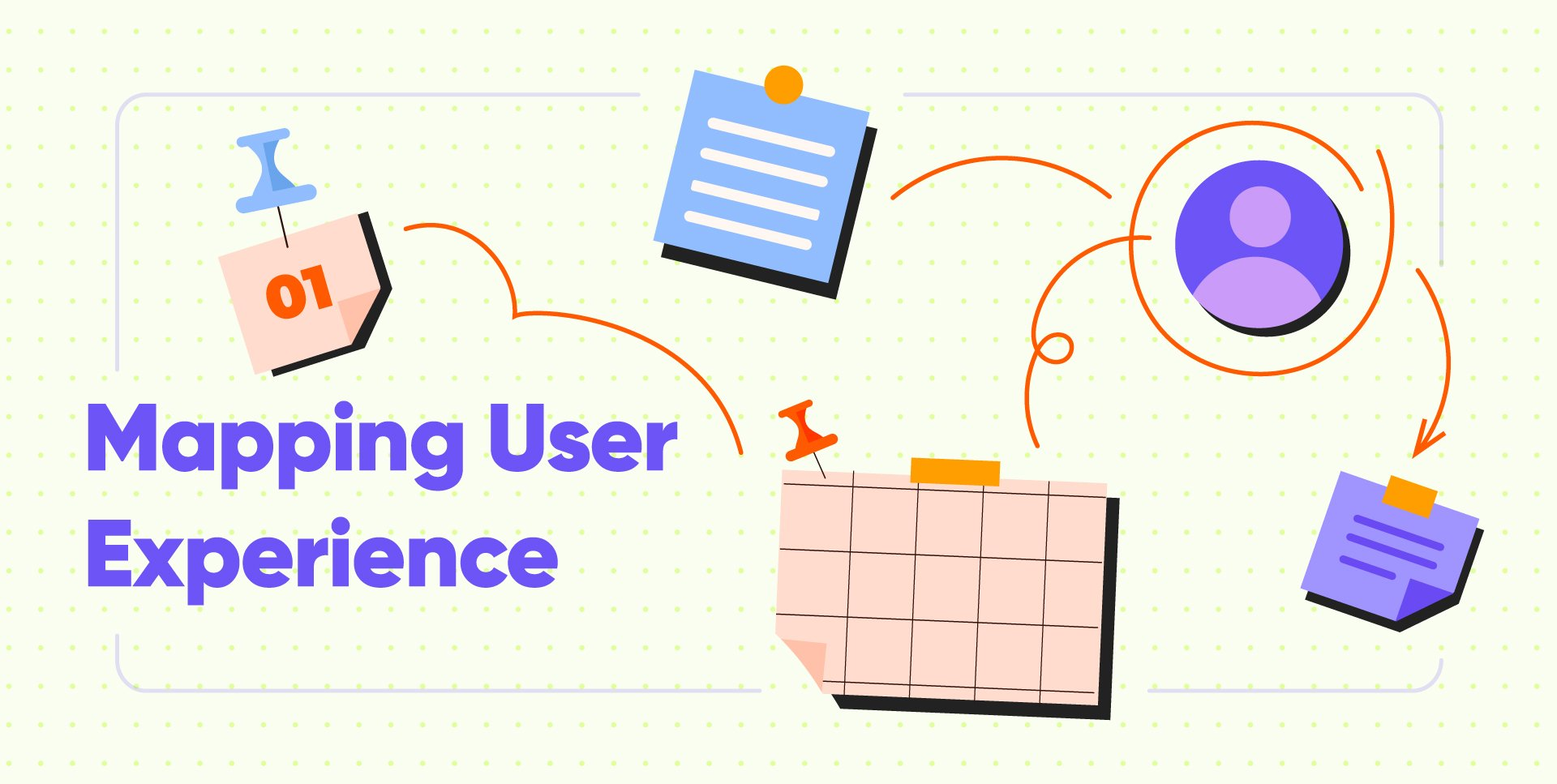Customer Journey Mapping: How to Effectively Visualize User Experience
• Customer Support
• FastBank

Imagine you run a small coffee shop in Beverly Hills, CA. Each day, dozens of customers walk through your doors, some regulars and some new faces. You want to ensure every customer leaves with a smile, not just because of the quality of your coffee but because of their overall experience. This is where customer journey mapping becomes invaluable.
By diving deep into each touchpoint, from the moment they first hear about your shop to their final sip and beyond, you can transform ordinary visits into extraordinary experiences.
In this article, we'll explore how to create a detailed map that captures the nuances of customer interactions, helps you make necessary improvements, and ensures your customers return time and time again.
Let's take off!
What is Customer Journey Mapping?
If we try to define customer journey mapping based on the coffee shop's use case, we can say that it is like creating a detailed story of your customers' experiences, from the moment they first hear about your coffee shop to their post-purchase reflections and interactions. Picture it as a narrative that charts every step your customer takes: discovering your shop, entering, ordering, waiting for their coffee to prepare, enjoying their coffee, and perhaps leaving a review or returning for another visit.
Now, let's get to the textbook definition: Customer journey mapping is a strategic process that businesses use to visualize and understand the steps and experiences a customer goes through while interacting with their brand, from the initial contact to post-purchase activities. It highlights key touchpoints, emotions, and potential pain points to improve overall customer experience.
By mapping customer journeys, businesses can gain valuable insights into customer behavior, identify areas where the customer experience can be enhanced, and develop strategies to improve customer satisfaction, loyalty, and retention. This process helps businesses see things from the customer's perspective, leading to more effective and customer-centric decision-making.
The Importance of Customer Journey Mapping
Customer journey mapping is highly important for businesses since it is a practical tool that drives actionable insights for future developments. It enables businesses to create targeted solutions that address specific customer needs and preferences, enhancing the overall user experience. Companies can build stronger, more meaningful relationships with their customers by continually refining the customer journey based on real data and feedback, leading to increased satisfaction, loyalty, and long-term success.
Practically speaking, customer journey mapping helps businesses to empathize with their customers by stepping into their shoes. This empathy-driven approach leads to more informed decisions about product features, marketing strategies, and customer service improvements. For instance, if a user journey map reveals that customers frequently abandon their carts due to a complicated checkout process, a business can streamline this process to reduce friction and increase sales. Additionally, mapping customer journeys highlights opportunities for proactive engagement, such as sending personalized follow-up emails or offering loyalty rewards, which can turn one-time buyers into repeat customers.
So, it's no surprise to hear Forbes report that, on average, companies saw a 54% greater return on marketing investment with customer journey management compared to 16.2% without.
Types of User Journey Maps
In customer experience management, there are various types of customer journey maps. Each serves distinct purposes and is tailored to provide unique insights into customer interactions. Understanding these different mapping approaches is crucial for businesses to visualize and enhance their customer journeys effectively. By exploring diverse customer journey maps, businesses can select the most appropriate tools to analyze and optimize customer experience journeys.
Here are the most common types of customer journey maps that have consistently delivered proven results for businesses:
Current State Journey Map
A current state journey map captures and illustrates the present experience of customers as they interact with a business. It maps out all the touchpoints, actions, emotions, and pain points that customers encounter from their first interaction to post-purchase follow-ups. By providing a clear snapshot of the current customer journey, businesses quickly identify immediate issues and areas of improvement.
Future State Journey Map
A future state journey map envisions the ideal customer experience, detailing how interactions should ideally unfold in the future. It serves as a strategic tool to set goals and plan for enhancements that elevate customer satisfaction and loyalty. By comparing the future state journey map with the current state, businesses can find gaps and develop a clear roadmap for implementing necessary changes and innovations. This type of mapping is particularly useful for long-term strategic planning, ensuring that every improvement aligns with the business vision.
Day-in-the-life Journey Map
The day-in-the-life journey map provides a detailed narrative of a typical day for a customer, incorporating their interactions with a business and other daily activities. This map helps businesses understand the broader context in which their products or services are used, offering deeper insights into customer lifestyles and routines. By viewing the customer's journey through the lens of their daily life, businesses can track down opportunities to make their products or services more relevant and integrated into the customer's daily habits.
Service Blueprint
A service blueprint extends beyond the customer's perspective to include the internal processes and systems that support the customer journey. It details the frontstage (customer-facing) and backstage (internal) activities, showing how these elements are interconnected. By visualizing the entire service operation, businesses can better understand the dependencies and coordination required to deliver a seamless customer experience. Service blueprints help ensure that internal processes are aligned with customer expectations, leading to more efficient operations and improved customer satisfaction.
How to Create a Customer Journey Map: A Step-by-Step Guide
Creating your customer journey map is a step-by-step process that starts with assembling a diverse team from various departments such as marketing, sales, and customer service. Once your team is all set, follow these steps:
-
Identify pain points in the user journey and set clear goals to address them.
-
Develop detailed customer persona to ensure you understand the specific needs and behaviors of different customer segments.
-
Next, outline the key stages of the customer journey: awareness, consideration, purchase, retention, and advocacy.
-
For each stage, identify the main action customers take, the touchpoints they interact with, and the channels they use.
-
Collect data from customer feedback, surveys, and analytics to accurately capture their experience.
-
Highlight the emotions and motivations driving customer behavior and pain points.
-
Regularly review and update your journey map to keep it aligned with changing customer behaviors and market trends, ensuring it remains a valuable tool for enhancing customer experience.
Key Components of a Customer Journey Map
To gain a complete understanding of customer experience and create a comprehensive user journey map, it's essential to incorporate several key elements:
Buyer Persona Development: Develop detailed buyer personas by collecting information about your target audience's preferences, behaviors, and demographics. This approach helps businesses create a vivid and relatable picture of their ideal customer, providing a solid basis for more targeted and effective strategies. Meanwhile, It's also essential to strike a balance so these personas are not too broad to include everyone nor too specific to include only a few people.
Touchpoints Identification: Identify and document every interaction point, both online and offline, where customers engage with your brand. Each touchpoint is crucial for building relationships, ensuring consistency, and addressing potential issues throughout the customer journey.
Customer Actions and Emotions: Map out the specific actions and emotional responses of customers at different stages of their journey. Understanding these behaviors and emotional touchpoints fosters empathy and enables businesses to tailor their strategies to better meet customer needs and expectations.
Pain Points and Opportunities: Identify the spots where customers encounter challenges, providing valuable insights for problem-solving. Recognize opportunities for improvement, which can drive innovation and help you exceed customer expectations.
Metrics: Incorporate key performance indicators (KPIs) and metrics to quantitatively measure the success and effectiveness of the customer journey map. Metrics like conversion rates, customer satisfaction scores, and retention rates offer essential ideas for continuous optimization. Additionally, leverage AI-powered customer feedback collection tools to gain deeper insights and more accurate data from customer interactions.
Customer Journey Stages: Break down the customer journey into distinct stages such as awareness, consideration, decision, purchase, usage, experience, and advocacy. Analyzing and enhancing each stage allows businesses to refine processes, improve communication, and boost customer satisfaction.
Top 5 Customer Journey Mapping Tools
In this section, we introduce the top five customer journey mapping tools that can help you streamline customer experiences for your business. These tools offer robust features for design, collaboration, and analysis, enabling you to continuously improve your strategies.
Here they are:
Hoory AI
Hoory AI is an innovative AI-powered virtual assistant designed to streamline customer support processes. It provides a nonstop support engine for businesses of all types, catering to e-commerce, fintech, and beyond.
In other words, Hoory AI is all about providing exceptional customer experience. Thanks to its rule-based AI assistant, Hoory AI allows the design of custom conversation flows to guide users through personalized interactions. It gives an open playground to create, modify, and optimize conversations that align with your business goals and resonate with your customers, directly addressing their needs.
The greatest thing about Hoory AI is that you get to create a user journey map and test it out within the platform. Once you are done with customer journey mapping, your AI assistant immediately starts acting on your instructions, communicating and performing based on the user journey map. Plus, you receive comprehensive reports and data, offering valuable insights to enhance and optimize the user experience continuously.
Figma
Figma is another great tool for creating customer journey maps due to its versatile design and prototyping capabilities. It allows teams to visualize and detail every stage of the customer experience. Besides, Figma's collaborative features facilitate real-time input from multiple stakeholders, ensuring the map is comprehensive and accurate.
ClickUp
ClickUp enables teams to outline each phase of the customer journey with customizable views such as lists, boards, and timelines. ClickUp’s robust task management features help users to intricately track customer interactions and pain points. Collaboration is streamlined with real-time editing, comments, and integrations with other tools, ensuring that all stakeholders can contribute to the mapping process.
Miro
Miro is a dynamic tool for creating customer journey maps, leveraging its extensive whiteboard capabilities. It allows teams to brainstorm and map out each phase of the customer journey in a visually engaging and interactive manner. Miro supports a variety of media, including sticky notes, images, and diagrams, enabling detailed and flexible representation of customer experiences.
Custellence
Custellence is a specialized software for creating detailed customer journey maps. Its intuitive interface allows users to easily plot out each stage of the customer journey with a focus on clarity and organization. Custellence supports rich detail by enabling users to add descriptions, images, and links to each touchpoint, ensuring a comprehensive view of the customer experience. Additionally, Custellence offers analytical tools to track and improve customer interactions, ensuring the map remains a dynamic resource for enhancing customer satisfaction.
Conclusion
Just as you carefully craft each cup of coffee to perfection, understanding and mapping out your customer journey ensures that every interaction in your coffee shop is just as thoughtfully curated.
As we've explored in this article, using customer journey mapping tools allows you to capture the nuances of these interactions, helping you identify areas for improvement and creating an experience that keeps customers coming back. Just like the aroma of freshly brewed coffee draws people in, a well-mapped customer journey ensures they leave with a lasting smile.
So, take the insights and strategies discussed and apply them to your own business. Doing so will cultivate an atmosphere where every visit is an extraordinary experience.
Here's to making every moment count, one touchpoint at a time!

























